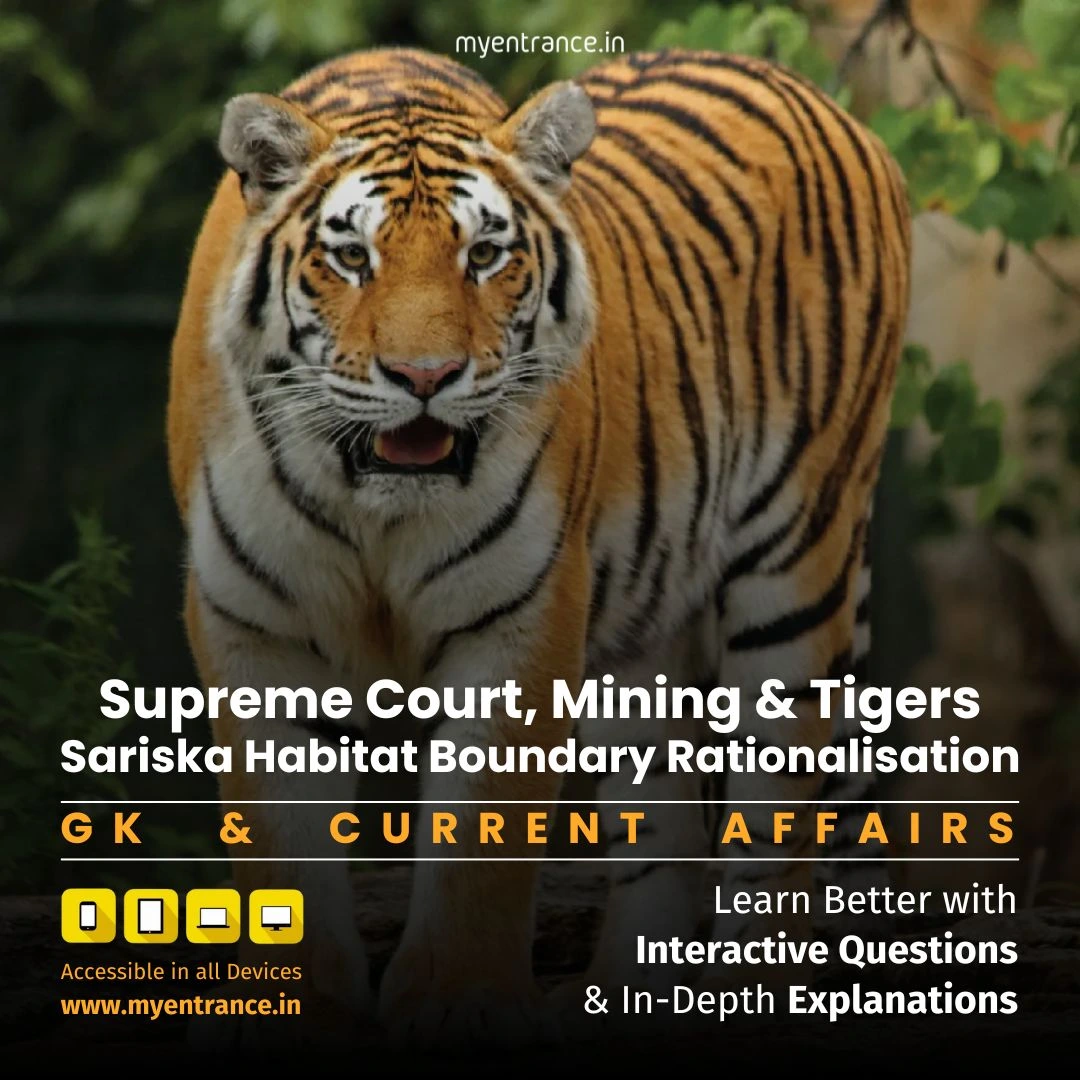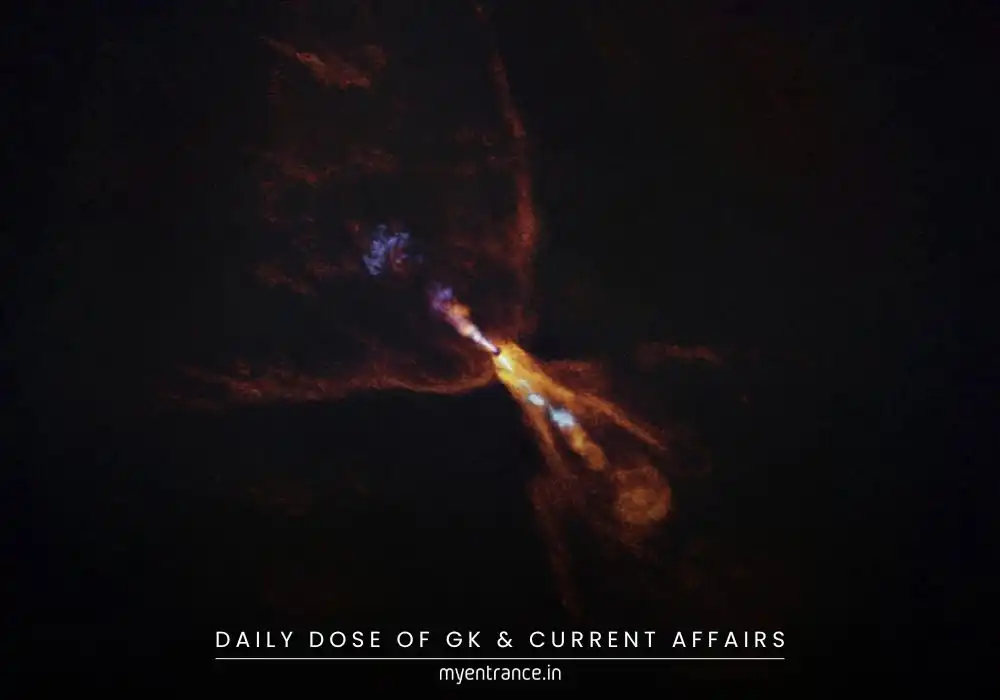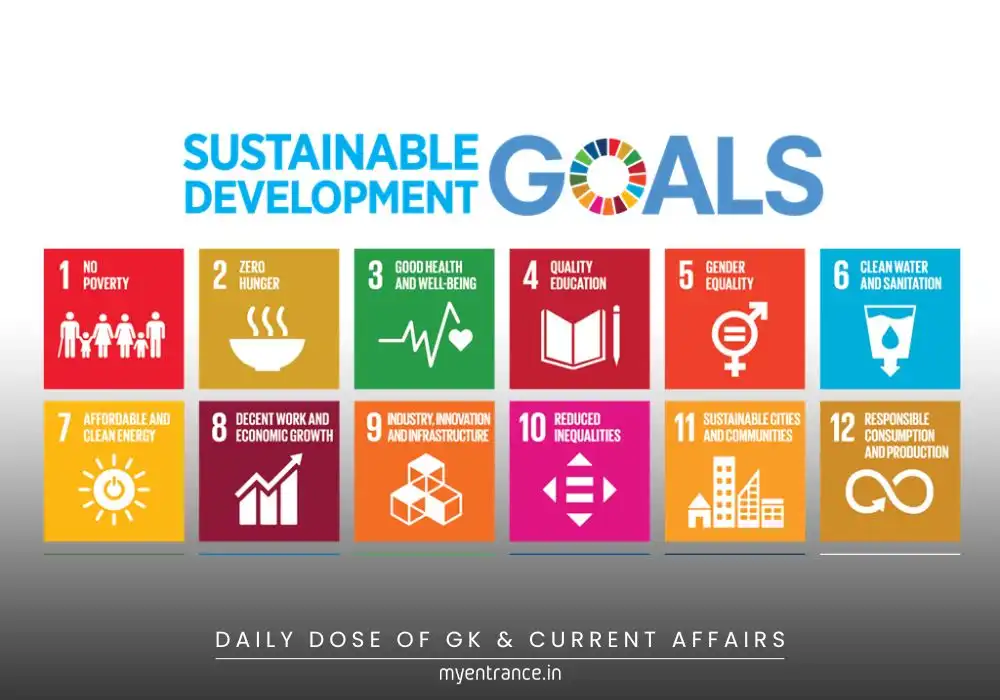Select Language
Supreme Court, Mining & Tigers: Sariska Habitat Boundary Rationalisation
A boundary rationalisation plan for Sariska’s Critical Tiger Habitat (CTH) may revive 50+ mines shut by the Supreme Court in 2023. This move sparks debates on conservation compromises and legal governance – crucial for environment-focused exams.

Sariska’s Shifting Boundaries: Mines vs. Tigers
In May 2023, India’s Supreme Court ordered the closure of 57 active mines within 1 km of Sariska Tiger Reserve’s Critical Tiger Habitat (CTH) in Rajasthan. Now, a state proposal to redraw the CTH boundaries could grant these mines a lifeline. Here’s why this matters for ecology and exams:
Key Developments:
Rationalisation Plan: Rajasthan seeks to exclude 48.39 sq km of “degraded hilly areas” from the CTH and add 90.91 sq km of high-quality habitat from the buffer zone.
Legal Context: The Supreme Court’s closure order came during a suo motu case on unchecked human activity in Sariska. The court-mandated Central Empowered Committee (CEC) later linked mining to “poor demarcation.”
Impact: Mines falling outside the redrawn 1-km CTH buffer could reopen, easing local economic pressure but raising ecological concerns.
Why This Matters for Conservation:
Critical Tiger Habitat (CTH): Legally inviolate zones under the Wildlife Protection Act (1972), vital for tiger breeding and survival.
Mining Threats: Blasting, noise, and habitat fragmentation disrupt tiger corridors in the Aravalli ecosystem – Sariska’s lifeline.
Governance Gaps: Ambiguous boundaries and delayed demarcation fuel conflicts, as noted by the CEC.
Exam-Critical Takeaways:
Role of Courts: The SC and NGT (National Green Tribunal) are actively enforcing habitat protection, setting key environmental governance precedents.
Balancing Act: States face pressure to reconcile livelihoods (mining jobs) with conservation (tiger corridors).
Sariska’s Significance: Part of India’s Project Tiger reserves in the biodiverse Aravallis; a recurring topic in GS III (Environment).
Sample Q&A for Exam Prep
Q: What is a Critical Tiger Habitat (CTH)?
A: Legally designated core areas under the Wildlife Protection Act where human activity is strictly regulated to protect tiger populations.
Q: Why did the SC close mines near Sariska in 2023?
A: They violated the 1-km buffer rule around the CTH, threatening tiger habitat integrity.
Q: How does Rajasthan’s CTH plan address mining concerns?
A: By excluding degraded peripheral areas from the CTH, moving mines outside the 1-km prohibition zone.
Q: Which constitutional body advised on Sariska’s boundary rationalisation?
A: The Supreme Court’s Central Empowered Committee (CEC).
Q: Sariska Tiger Reserve is part of which larger ecological region?
A: The Aravalli mountain range – a critical wildlife corridor in North India.
Most Predicted Questions
Comprehensive study materials, Expert-guided tips & tricks, Mock tests and instant results.
Start your SSC, NIFT, NID, FDDI, PSC journey today with MyEntrance, your ultimate online coaching platform.















